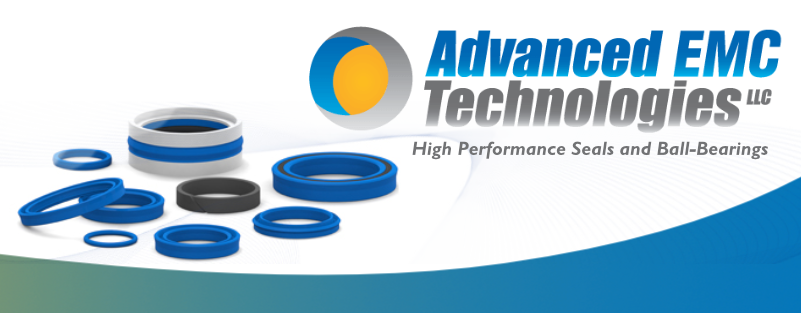A Guide to Selecting Metal O-Rings for Harsh Environment Sealing
In industries like aerospace, oil and gas, and chemical processing, extreme temperatures, high pressures, and aggressive chemicals are common. Metal O-rings provide a resilient solution where standard elastomer seals fail. Designed to withstand these challenging environments, they ensure long-lasting performance and reliability. This guide will help you choose the right metal O-ring for your specific application.
Metal O-rings are designed for high-performance applications in demanding environments. Whether you’re dealing with extreme heat, cryogenic conditions, or aggressive chemicals, metal O-rings maintain a reliable seal.
Key Benefits:
- Temperature Resistance: Metal O-rings operate over a wide temperature range, from cryogenic levels to 1600°F (870°C), far beyond the capacity of most elastomer seals.
- Pressure Handling: Able to withstand pressures up to tens of thousands of psi, metal O-rings are ideal for applications like oil exploration, gas processing, and aerospace systems.
- Chemical Durability: These O-rings are often made from corrosion-resistant materials such as Inconel, stainless steel, or Hastelloy, making them effective in harsh, corrosive environments.
Choosing the right metal O-ring starts with understanding the environmental challenges it will face. Ask yourself the following questions:
What are the temperature extremes? Will your O-ring be exposed to high heat, cryogenic conditions, or both? The material should withstand the full range of temperatures your system operates in.
What are the pressure levels? High-pressure environments require O-rings that can resist deformation and extrusion. Applications like oilfield drilling and aerospace engines often experience pressures up to 30,000 psi.
What chemicals will the O-ring be exposed to? For systems in contact with corrosive chemicals or gases, selecting a corrosion-resistant material is key. For example, Inconel or Hastelloy can endure severe corrosion, while stainless steel suits less aggressive conditions.
The material of your metal O-ring is critical to its performance. Here’s a breakdown of common options:
Stainless Steel (304, 316): Suitable for many industrial applications, stainless steel offers good corrosion resistance and temperature tolerance. However, for highly corrosive environments, a more resistant material may be needed.
Inconel: Known for its strength at high temperatures and resistance to oxidation, Inconel is ideal for applications involving extreme heat and chemical exposure, such as aerospace engines and chemical reactors.
Hastelloy: One of the most corrosion-resistant alloys available, Hastelloy is perfect for environments with high acidity, seawater, or chlorides, making it a go-to in chemical processing and marine applications.
Nickel: With excellent corrosion resistance and versatility across temperature ranges, nickel-based O-rings are commonly used in aerospace and subsea environments.
Metal O-rings come in different designs to suit various applications. The cross-sectional shape impacts how they perform under pressure and movement:
Solid Metal O-Rings: Best for static pressure conditions, these offer maximum sealing in environments where movement is minimal, such as flanged joints.
Hollow Metal O-Rings: Offering more flexibility than solid O-rings, hollow designs are suited for dynamic applications that involve movement or vibration. They provide reliable sealing in environments where pressure isn’t extreme.
Coated Metal O-Rings: A thin coating of PTFE or silver can be applied to metal O-rings to enhance sealing capabilities and prevent galling, making them suitable for vacuum sealing and high-pressure systems.
The effectiveness of a metal O-ring depends on both surface finish and proper installation. Ensure that the mating surfaces are smooth and free of debris. Rough surfaces can lead to leaks, even with a high-quality O-ring.
Additionally, proper handling is crucial during installation. Metal O-rings can be damaged by nicks or scratches, which compromise the seal. Careful installation will preserve the O-ring’s integrity and ensure reliable performance.
Metal O-rings are found in a wide range of critical applications, including:
Aerospace and Defense: Metal O-rings provide reliable sealing in high-temperature, high-pressure systems like aircraft engines and fuel systems.
Oil and Gas Exploration: In offshore drilling and oilfield equipment, metal O-rings deliver dependable sealing even under extreme pressure, temperature, and chemical exposure.
Chemical Processing: Metal O-rings are used in systems exposed to corrosive chemicals and high pressures, such as reactors and pipelines.
Power Generation: Turbines, compressors, and high-temperature valves rely on metal O-rings for sealing in harsh environments.
Comparison of Metal O-Ring Materials for Harsh Environments
| Material |
|
||||||||||
|---|---|---|---|---|---|---|---|---|---|---|---|
| Temperature Range |
|
||||||||||
| Pressure Resistance |
|
||||||||||
| Corrosion Resistance |
|
||||||||||
| Best Applications |
|
Conclusion
Metal O-rings are the ultimate solution for harsh environments where elastomer seals fail. By selecting the right material and design based on your application’s temperature, pressure, and chemical challenges, you can ensure optimal performance and longevity.
Need expert guidance in choosing the right metal O-ring? Contact Advanced EMC Technologies today for tailored solutions that reduce downtime and maximize performance.


